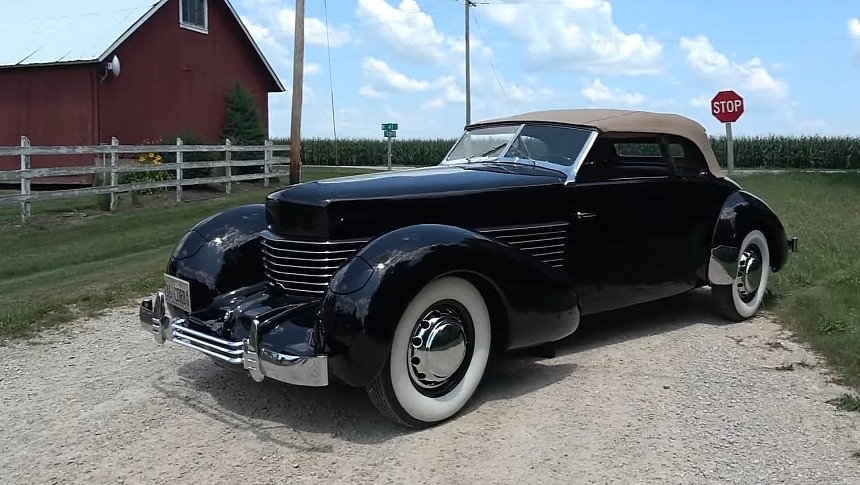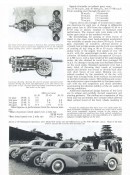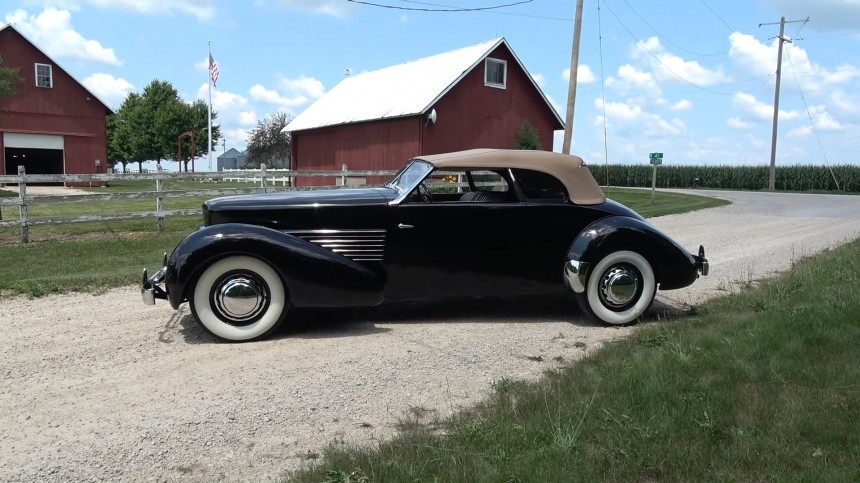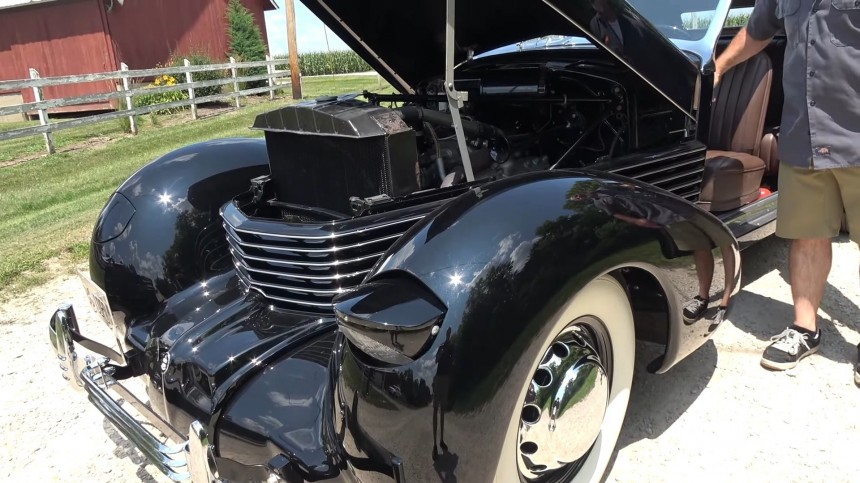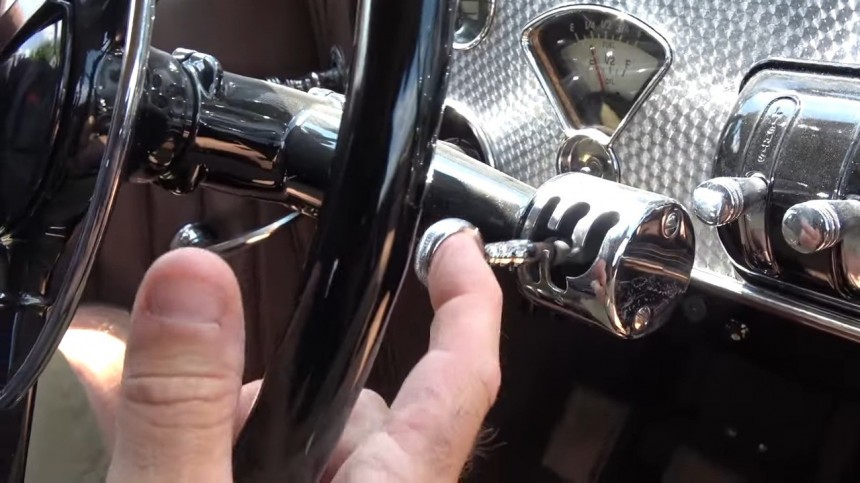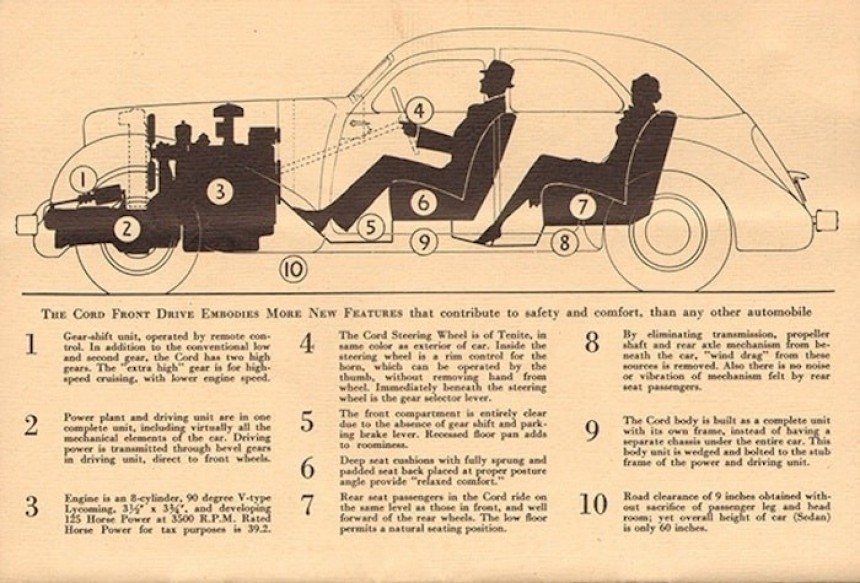One of the greatest carmakers ever to have its name engraved in the history of American motoring is Cord, a long-since defunct brand of Auburn Automobile Company. Almost unanimously acclaimed as the most beautiful automobile of the 30s, the Cord 810 was also a technological diamond in the rough. This cursed jewel lived for one year and became the company’s swan song.
After a disastrous start in life two years after the Great Depression of 1929 put the entire world on halt, Cord had another go at building an automobile. Having failed to break the bank with the L-29 model, the company presented the 810 in November 1935. Interestingly, the car was supposed to be launched in January 1936 at the New York Auto Show. Still, the President filed a request that the exhibition opening be brought forward a couple of months, to November 2.
That would be Franklin Delano Roosevelt, President of the United States of America. He proposed (to help even out employment in the auto industry) to push the launch of new models for a given year two calendar months before that year’s first day. The organizers – naturally – obliged, but that put Cord in the ropes.
The rules of the fair stated that only production automobiles could be displayed, meaning the model had to have at least 100 examples assembled. Cord’s engineers didn’t have the millions of wrench-turning dollars of the Big Three, nor the time to build an assembly line. What they had was the audacity, nerve, and bravery to hand-build 100 cars - in 116 days.
The Cord 810 took 240 days – around eight months – from testing prototype to mass production. The public received the new automobile with accolades because the car was stunningly beautiful and promised a technological breakthrough that was eons ahead of anything else on the market.
First of all, the car broke away from the American convention of rear-wheel-drive motoring, instead proposing a complex (and complicated) solution of a front-mounted transmission that sat before the motor. The gearbox assembly was installed in front of the axle and operated via a highly innovative but crudely fabricated electro-mechanical vacuum shifting mechanism.
The 1936 Cord is reputedly one of the most striking and innovative cars in the glorious lineage of pre-war America. Apart from going entirely against the current with its front-wheel-drive traction – the first mass-produced car in this architecture from a U.S. manufacturer – the Cord was also sublimely elegant and a class above all its competitors.
Eliminating the transmission tunnel and rear differential allowed for a much lower stance – for instance, passengers no longer needed running boards to get in the car. The concealed headlights – cleverly disguised in the front fenders – are one of the car’s signature traits. While wildly cool looking, they weren’t that easy to operate.
It would have been safer for the driver to stop the vehicle before turning on the light. Each lamp was controlled separately from inside the cabin via a hand crank under the dash, right next to each door. The driver could quickly raise the left optical element. Still, unless a passenger was seated on the right, it suddenly became an adventure to pop up the second light while on the move.
The Cord came in three body styles for four models: two sedans, a convertible, and a phaeton. The 'alligator head' hood – affectionately called ‘coffin nose’ among the brand’s enthusiasts – is one of the most recognizable front ends in American motoring. The complications that sadly guillotined the Cord were lying under that hood. The 810 was a 125-hp, 289 cubic-inch (4.7-liter) L-head V8 mated to a four-speed gearbox with a Bendix Fingertip Control preselector.
The operation is literally done with the index finger, and the quadrant is about the size of a cigarette lighter. See its function in the video below, where one of the rare surviving 1936 Cord 810s casually drives around the suburbs of Chicago. Designed for a three-speed transmission, the gearbox casing was too small for a four-speed mechanism, and numerous problems hindered regular use.
The mechanical issues that stubbed the Cord 810’s toes were caused mainly by a sublime lack of testing – Auburn had neither the funds nor the time to put all those setups to proper field trials before putting them together in an automobile. Adding to the engineering foot-in-mouth was a slow production rate, which derailed planned deliveries from 'before Christmas' in1935 to April of the following year. Once the customers saw that their cars were (too) late to arrive, many withdrew from the deal.
The Cord 810 was Gordon Miller Buehrig's design, featuring independent front suspension, a unitized body with pontoon fenders, a horn ring, a covered gas filler cap, and flush-mounted rear lights. A celebration of the Art Deco style, the streamlined automobile commanded respect not just by looks alone but also by its price tag. At around $3,000, the Cord was sitting at the high table, rubbing elbows with Cadillac, although its image was that of a lower-level car.
The Lycoming V8 was a masterpiece of its era, sporting aluminum heads, a 3.50x3.75-inch bore and stroke, 6.3:1 compression, three main bearings, but just a single exhaust. The powerplant sat on a stub-type sub-frame, sensing its power to a 4.7:1 spiral bevel differential with semi-floating axles. The brakes – also made by Bendix – were four 11-inch hydraulic drums.
The Cord 810 was only offered in 1936, and the model was replaced by the Cord 812 in the following year – the last in the company’s existence. 1,174 Cord 810 were assembled, and one of them is the star of the video attached to this story. The current owner inherited the classic car from his father, an avid and discerning collector who bought the automobile in 1985. You can see him in an older video (also the work of Lou Costabile) giving a brief tour of the gorgeous black phaeton.
Although the car makes an interesting piece of automotive history today, it was so uncommonly sophisticated when it came on the market that it collapsed under its fame. Even the driver – while otherwise appraising the car for the symbol it stands as – admits that driving it is a ‘pray for the best’ adventure. While it may sound nostalgic and romantic today, it was anything but, even in an era when motorists had a lot less expectations from a car than what we have now.
That would be Franklin Delano Roosevelt, President of the United States of America. He proposed (to help even out employment in the auto industry) to push the launch of new models for a given year two calendar months before that year’s first day. The organizers – naturally – obliged, but that put Cord in the ropes.
The rules of the fair stated that only production automobiles could be displayed, meaning the model had to have at least 100 examples assembled. Cord’s engineers didn’t have the millions of wrench-turning dollars of the Big Three, nor the time to build an assembly line. What they had was the audacity, nerve, and bravery to hand-build 100 cars - in 116 days.
The Cord 810 took 240 days – around eight months – from testing prototype to mass production. The public received the new automobile with accolades because the car was stunningly beautiful and promised a technological breakthrough that was eons ahead of anything else on the market.
The 1936 Cord is reputedly one of the most striking and innovative cars in the glorious lineage of pre-war America. Apart from going entirely against the current with its front-wheel-drive traction – the first mass-produced car in this architecture from a U.S. manufacturer – the Cord was also sublimely elegant and a class above all its competitors.
Eliminating the transmission tunnel and rear differential allowed for a much lower stance – for instance, passengers no longer needed running boards to get in the car. The concealed headlights – cleverly disguised in the front fenders – are one of the car’s signature traits. While wildly cool looking, they weren’t that easy to operate.
The Cord came in three body styles for four models: two sedans, a convertible, and a phaeton. The 'alligator head' hood – affectionately called ‘coffin nose’ among the brand’s enthusiasts – is one of the most recognizable front ends in American motoring. The complications that sadly guillotined the Cord were lying under that hood. The 810 was a 125-hp, 289 cubic-inch (4.7-liter) L-head V8 mated to a four-speed gearbox with a Bendix Fingertip Control preselector.
The operation is literally done with the index finger, and the quadrant is about the size of a cigarette lighter. See its function in the video below, where one of the rare surviving 1936 Cord 810s casually drives around the suburbs of Chicago. Designed for a three-speed transmission, the gearbox casing was too small for a four-speed mechanism, and numerous problems hindered regular use.
The Cord 810 was Gordon Miller Buehrig's design, featuring independent front suspension, a unitized body with pontoon fenders, a horn ring, a covered gas filler cap, and flush-mounted rear lights. A celebration of the Art Deco style, the streamlined automobile commanded respect not just by looks alone but also by its price tag. At around $3,000, the Cord was sitting at the high table, rubbing elbows with Cadillac, although its image was that of a lower-level car.
The Lycoming V8 was a masterpiece of its era, sporting aluminum heads, a 3.50x3.75-inch bore and stroke, 6.3:1 compression, three main bearings, but just a single exhaust. The powerplant sat on a stub-type sub-frame, sensing its power to a 4.7:1 spiral bevel differential with semi-floating axles. The brakes – also made by Bendix – were four 11-inch hydraulic drums.
Although the car makes an interesting piece of automotive history today, it was so uncommonly sophisticated when it came on the market that it collapsed under its fame. Even the driver – while otherwise appraising the car for the symbol it stands as – admits that driving it is a ‘pray for the best’ adventure. While it may sound nostalgic and romantic today, it was anything but, even in an era when motorists had a lot less expectations from a car than what we have now.
